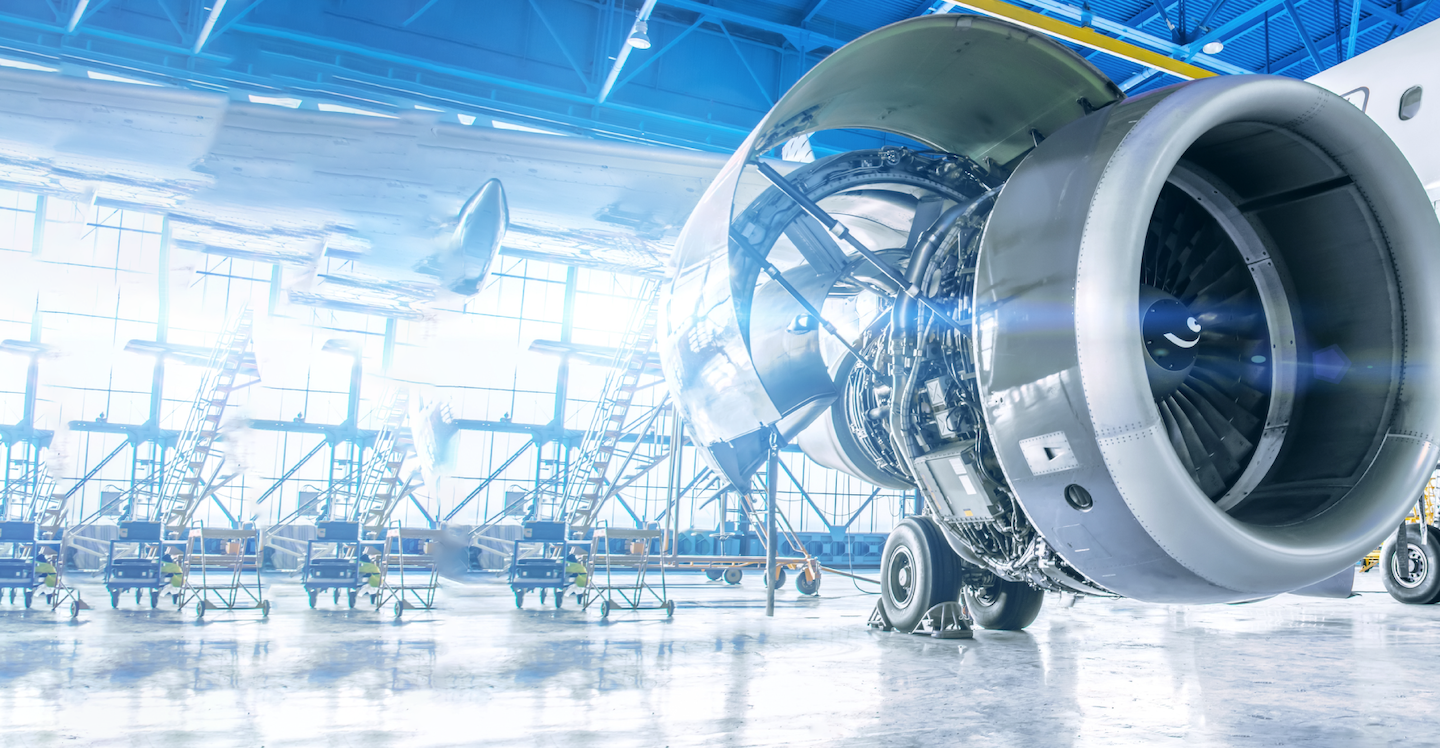
The aerospace and airline industries are standing at a pivotal moment in the evolution of enterprise technology. AI Workers—intelligent digital agents capable of executing tasks, making decisions, and augmenting human expertise—are not just tools for incremental change but a revolutionary force redefining safety, efficiency, and operational effectiveness in this highly regulated, mission-critical industry. By integrating AI Workers into maintenance, operations, and customer service, organizations can unlock unprecedented opportunities to enhance workflows, reduce disruptions, and optimize workforce collaboration. As we look to the future, the impact of AI Workers is as clear as a high-altitude horizon, offering a transformative shift in how work is performed and scaled.
The Shift to AI-Enabled Operations
For airlines and aerospace organizations, intelligence has always been at the core of operations. From complex air traffic coordination systems to precise engineering requirements, data-driven decisions are the lifeblood of the industry. The advent of AI introduces a new layer to this intelligence—a capability not just to analyze but to predict, augment, and act.
Today, we see a paradigm shift where AI systems can take on more dynamic, multi-functional roles. These "AI Workers" have the potential to revolutionize the way airlines maintain aircraft, manage fleets, and enhance passenger experiences.
Why This Transformation is Critical Now
AI technologies are advancing rapidly, offering aerospace organizations a chance to tackle persistent challenges like never before. Some of these breakthroughs include:
- Multi-capability systems capable of handling complex, interwoven tasks.
- Flexibility to transfer intelligence between domains, such as maintenance and operations.
- Contextual understanding, allowing AI tools to make decisions with a level of common sense and awareness previously unavailable.
These advancements come at a time when the industry is under tremendous pressure to reduce costs, maintain tight safety regulations, and deliver seamless passenger service. The organizations that seize this opportunity will not only enhance their operations but also secure long-term competitive advantage.
Unique Challenges in Aerospace
Like many industries, aerospace faces common hurdles in adopting AI, such as data silos and workforce skills gaps. However, these challenges are compounded by the unique and stringent regulatory constraints that govern this mission-critical sector. Regulatory bodies like the FAA and EASA require not just compliance, but a robust framework for safety, transparency, and performance validation, adding an extra layer of complexity to AI implementation.
Compounding these challenges is the need to integrate AI Workers into legacy systems, many of which were never designed to accommodate modern automation technologies. The interconnected nature of airline operations—spanning crew scheduling, maintenance, air traffic control, and customer service—means AI solutions must operate seamlessly within this intricate web. They must support real-time decision-making and exhibit a high degree of interoperability. On top of that, the unpredictable nature of the industry, shaped by factors like weather disruptions, geopolitical events, and fluctuating passenger demand, requires AI Workers to be both adaptive and continuously learning.
Cybersecurity is another critical factor. With AI Workers managing immense volumes of sensitive operational and passenger data, the risk of cyber threats, data breaches, and adversarial AI attacks is a constant concern. Airlines must establish robust AI governance frameworks to safeguard their systems, ensure ethical deployment, eliminate bias in decision-making, and maintain accountability for AI-driven outcomes.
Finally, the human aspect must not be overlooked. Despite the potential of AI Workers to enhance efficiency, their introduction can create apprehension among the workforce, particularly around job displacement. Building trust and buy-in from pilots, maintenance crews, and customer service agents is essential for smooth implementation. Change management strategies should focus on upskilling employees, fostering confidence in AI tools, and carefully integrating these technologies into existing workflows. By making AI a collaborator rather than a disruptor, airlines can harness its potential while empowering their teams to excel in an industry that demands precision and adaptability.
Regulatory bodies like the FAA and EASA require not just compliance but a robust framework for safety, transparency, and performance validation, adding an extra layer of complexity to AI implementation.

Strategic Opportunities
AI offers remarkable ways to address the industry's core challenges. Here’s a closer look at how these tools are already reshaping aerospace and airline operations.
1. Predictive Maintenance for Safety and Cost Savings
Aircraft maintenance often accounts for a significant portion of operational costs. Traditional methods rely on routine checks or reactive repairs. AI-driven predictive maintenance changes the game by analyzing real-time data from sensors and systems to predict potential failures before they occur.
For instance, Delta Airlines and Rolls-Royce have implemented predictive analytics to significantly reduce downtime and unexpected failures. By optimizing maintenance schedules, they’ve saved costs and enhanced fleet reliability.
2. AI-Powered Aircraft Inspections
Aircraft inspections have traditionally been time-consuming and reliant on human expertise. However, companies like Airbus have adopted AI-powered drones for visual inspections, cutting down what used to take hours into minutes. These drones not only reduce inspection time but also improve accuracy, offering better safety guarantees.
3. AI-Enhanced Air Traffic Management
AI is also making air travel more seamless through enhanced air traffic control. NASA’s ATD-2 project, for example, has used AI to reduce taxi delays and improve flight scheduling, demonstrating how algorithm-driven solutions can optimize airspace management and minimize disruptions at busy airports.
4. Digital Twins for Aircraft Optimization
Digital twins, a virtual replica of aircraft systems, have emerged as a powerful tool for manufacturers like Boeing and Rolls-Royce. These models simulate how an engine will perform under specific conditions, allowing engineers to predict wear and tear and adjust designs for greater efficiency. Digital twins also allow AI workers to view, understand and work with physical reality. By refining operations virtually, organizations reduce dependence on costly physical tests and accelerate innovation.
5. Workforce Augmentation with AI
AI isn’t here to replace humans; it’s here to make their jobs easier. Airlines are already using virtual assistants to support pilots and air traffic controllers. By taking over routine tasks like communication management or flight performance monitoring, these tools free up human workers to focus on higher-order decision-making.
Tactical Execution for Maximum Impact
Adopting AI in aerospace starts with answering two pivotal questions: Where are your opportunities? and What should you do about them? While they may seem straightforward, effectively addressing these questions demands a fresh approach to business thinking.
Where Are Your Opportunities?
Opportunities often lie in areas where traditional methods fall short. Aerospace organizations should focus on problems that couldn’t be solved with conventional automation—data silos, overwhelming volumes of information, and cross-functional breakdowns.
By identifying processes where human experts struggle with complexity or where quality consistently competes with speed, organizations can uncover meaningful AI applications that enhance both safety and efficiency.
What Should You Do About Them?
The next step is turning those opportunities into actionable strategies. Here’s how to approach it effectively while keeping focus on operational impact:
1. Understand Your Current Processes: It’s not enough to rely on documented workflows. Aerospace organizations need to uncover how work actually gets done on the ground—in maintenance hangars, air traffic control centers, and customer service teams. Mapping out real-world processes helps identify inefficiencies and pinpoint where AI can provide meaningful solutions, such as automating manual inspections or predicting maintenance needs.
2. Define Success Clearly – and Measure it Continuously: What does “good” look like? This question is critical yet often overlooked. Organizations must define success using measurable criteria, such as minimizing downtime, improving safety metrics, or optimizing workforce utilization. These benchmarks enable teams to gauge AI's impact and ensure alignment with overarching business goals. Establish metrics and benchmarks for key goals like cost reduction, operational improvements, and compliance with regulations. However, defining success is only the beginning; maintaining alignment requires the discipline to monitor performance continuously, report on results, and take corrective action when needed. Building a performance measurement capability ensures that these metrics remain relevant and actionable, fostering a culture of accountability and enabling ongoing improvements for sustained value.
3. Document Technical and Data Requirements for AI Success: What systems and data need to talk to each other? To maximize AI’s effectiveness and long-term viability, organizations must document the technical and data requirements. Doing so is not just a step in the process, but a foundational necessity that ensures:
- AI Models Are Built on the Right Data: A well-documented foundation guarantees that AI models are designed using accurate, relevant data while adhering to data privacy and security standards. This safeguards sensitive information while maintaining compliance with regulations and ethical practices.
- Alignment Among Stakeholders: Clear documentation promotes a shared understanding among stakeholders, creating alignment between what AI systems are expected to deliver and what they can realistically achieve. This proactive approach avoids miscommunication, reduces project delays, and ensures everyone—from developers to end-users—is on the same page.
- Enhanced Scalability and Maintenance: Well-documented technical requirements facilitate the scalability and long-term performance of AI systems. With a detailed blueprint, organizations set the stage for easier upgrades, better optimization, and efficient maintenance of AI-driven solutions, ensuring their relevance and utility as business needs evolve.
By following these steps, aerospace organizations can move beyond AI experimentation and toward scalable, high-impact solutions that enhance safety, efficiency, and operational resilience.

Next Steps: Executing Effectively
Once you’ve identified areas of opportunity within your aerospace operations and outlined initial strategies, it’s time to move into tactical execution. These tailored steps can help your organization overcome challenges and unlock the full potential of AI technologies:
1. Target the Right Opportunities
- Begin with high-impact, operational areas, such as predictive maintenance and digital inspections, where value can be demonstrated quickly.
- Prioritize longstanding challenges that traditional automation couldn’t solve, such as managing complex data systems or optimizing air traffic flow.
- Focus on scenarios where human operators are overwhelmed by data complexity or volume, like real-time analysis in air traffic control or interpreting vast aircraft performance data.
- Look for opportunities that align with safety and efficiency goals, allowing for immediate ROI without massive organizational shifts.
2. Build Your Framework
- Clearly define what success looks like, using measurable outcomes such as improved safety metrics, reduced downtime, or higher operational efficiency.
- Map how AI systems, like digital twins or predictive analytics tools, will interact with key enterprise systems, ensuring integration across data silos.
- Develop evaluation metrics that reflect human-centered goals, such as accuracy, reliability, and adaptability, rather than traditional automation KPIs.
3. Move at AI Speed
- Accelerate adoption by shifting from lengthy implementation timelines to iterative, rapid experimentation.
- Build agility into your processes, enabling your teams to adapt as AI tools evolve and regulatory guidelines develop.
- Prioritize learning and refining over perfection; every AI deployment provides an opportunity to gather insights and improve.
4. Scale With Intent
- Focus on creating scalable AI solutions, such as reusable predictive maintenance algorithms or workforce optimization workflows, that can extend across similar processes.
- Equip leaders and teams to recognize and replicate successful patterns, enabling continuous improvement.
- Ensure scaling efforts consider regulatory compliance at every stage, maintaining alignment with FAA, EASA, and other governing bodies.
Take Flight with AI Transformation
AI is no longer a distant vision for the aerospace and airline industries—it’s an active force reshaping the future of safety, efficiency, and operational excellence. The question isn’t whether AI will revolutionize this industry, but whether your organization will be at the forefront or left catching up.
Now is the time to seize the opportunity, break data silos, and empower your workforce to work alongside AI. It’s not just about keeping up—it’s about pioneering a safer, smarter, and more efficient horizon for the industry. The future of aviation is AI, and it’s time to take the lead.

RELATED INDUSTRIES
RELATED SOLUTIONS




